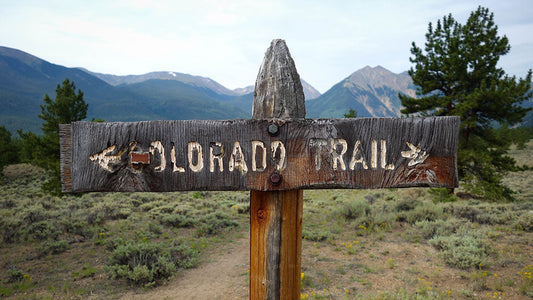I began "climbing"—the trial turned hobby turned full unhealthy obsession kind of climbing—four years ago. It was jumpstarted during a September afternoon spent in New Hampshire’s Pawtuckaway State Park pulling on pebbles. At seventeen I was impressionable and searching for identity. Climbing presented itself to me at the ideal juncture. Now fast forward four years and I’m staring down the barrel at twenty-two years young. I have just graduated college and am neck deep in my second season as an ice-climbing guide for St. Elias Alpine Guides out of McCarthy, Alaska. These days, my partner Rachael and I would consider ourselves “lifers”. Yet where I have seemed to stumble into the single-tract mind of addiction, she manages to incorporate photography into the mix in an attempt to share a bit of the junk-show that is our average day out. Life as a glorified gumbies has thus far fed the desire to expand our game. Though in climbing, as it seems, half of learning is just the realization of how much you don’t know.
 In the spring of 2016, I saddled up for the largely disappointing and often uneventful charge to find climbable Wrangell rock. In the land of mile-high conglomerate mud cliffs, Wrangell St. Elias is no motherland to the rock climber. Here, beyond an assortment of magnificent snow-capped peaks, the largest National Park in the country boasts little more rock than the occasional glacial erratic found scattered along miles of moraine. Even so, the desperate few conjure images of lost walls hidden in the labyrinth of ice spider-webbed across the range.
In the spring of 2016, I saddled up for the largely disappointing and often uneventful charge to find climbable Wrangell rock. In the land of mile-high conglomerate mud cliffs, Wrangell St. Elias is no motherland to the rock climber. Here, beyond an assortment of magnificent snow-capped peaks, the largest National Park in the country boasts little more rock than the occasional glacial erratic found scattered along miles of moraine. Even so, the desperate few conjure images of lost walls hidden in the labyrinth of ice spider-webbed across the range.

 After arriving in McCarthy for my second season, the natural talk of goals and objectives for the short summer ebbed and flowed following suit with the week’s workload. With but a touch of prodding, Wayne Mars, owner of St. Elias Alpine Guides and mentor to most, gifted me an idea. A buttress known as Mordor sticks roughly 1500’ out of the western slope of Chitistone Pass. Beta on the feature was described via a handful of old photographs showing a questionable but intriguing columnar base running through the first third of the buttress, progressing into 1000’ of even more suspicious rock above. Which, by Wrangell standards fueled the curiosity enough to warrant a mission out; Rachael and I were psyched on a bit of exploration.
After arriving in McCarthy for my second season, the natural talk of goals and objectives for the short summer ebbed and flowed following suit with the week’s workload. With but a touch of prodding, Wayne Mars, owner of St. Elias Alpine Guides and mentor to most, gifted me an idea. A buttress known as Mordor sticks roughly 1500’ out of the western slope of Chitistone Pass. Beta on the feature was described via a handful of old photographs showing a questionable but intriguing columnar base running through the first third of the buttress, progressing into 1000’ of even more suspicious rock above. Which, by Wrangell standards fueled the curiosity enough to warrant a mission out; Rachael and I were psyched on a bit of exploration.



Our first day out was spent with a relaxed flight and trek into Chitistone followed with some much needed strategizing once we had eyes on the feature we’d set out to climb. Immediately there were some questions regarding the probability of a full line up the entirety of the buttress. From a far we eyed a 300’ band of rotten rust-colored “basalt” stretching the width of the buttress; it seemed completely impassible. Even so, we were having far too much fun piecing together our basecamp and stuffing ourselves with Good To-Go grub to warrant any sort of disappointment. We wanted to find out just what sort of choss-show it was going to be up close and in person.


After a morning spread of Good To-Go's Oatmeal, Granola, and Alpine Start’s morning brew, we broke camp and dove into five hours of wrestling our way through mud and scree to the base of Mordor. Gazing up at our planned route we could count dozens of SUV-sized widow makers in only the first few hundred feet of overhanging, exfoliating, and discontinuous crack systems. Someone could climb that line, I’m sure, but it wasn’t going to be us. Instead we traversed around the buttress to a shield stretching the first 350’ up the feature on its north face. The rock here was far from perfect, but seemed to be our best option.

Our line began in a small alcove protected from the rest of the route by varied climbing through a bulge and into a #4-5 pod. Immediately after leaving the pod a zigzagging finger crack brought us 50’ higher and into a brief section of rotten rock, forcing a 40’ unprotected traverse into a neighboring crack system. After plugging a scattered nest of cams, moderate climbing led upwards until a second traverse brought us back into some mildly cohesive rock. Once reunited atop the pitch we decided a bit of discussion was justified. Our first, and seemingly most appealing pitch, clocked in somewhere around 5.10+ R/X with the promise of more degrading rock above. Still, we were sitting in a panorama of hanging glaciers and Alaskan tundra; as exciting as the build-up for Mordor had become, the area had more to give than one rock route. With a fair descent to camp still ahead, and the image of a Three Bean Chili burrito in hand and hot sauce dripping from our lips, the decision was made to bail.

Our third day brought us to a small bluff of basalt less than a mile north of the buttress. We were curiosity-driven to this small wall by what looked to be the best quality rock within a day’s distance from the pass. It was a cute crag strewn with curious mountain goats, wildflowers, and the occasional mosquito. Walking towards the small wall, I had to try and hide the grin on my face. I couldn’t believe that we were stumbling towards quality rock, and I refused to consider it true until I pulled onto the wall itself in and attempt to avoid the disappointment I knew was to ensue. To our dismay the rock was enjoyable. Smooth columnar basalt welcomed us up line after line under bluebird skies. We were cragging in Wrangell St. Elias. It was laughable, but with sardines in hand sent with a smile from family afar, and the only real pure rock climbing I’ve yet seen in Wrangell St. Elias, we were glowing.
 This Chitistone trip keyed me into a fair bit of proper perspective. It was not my first expedition, nor the first that resulted in the decision to bail from or inability to complete an objective. It was though my first expedition where I was introduced to the worth of letting go of a goal. Given our relatively young climbing careers, it easy to become objective-obsessive. It is the simplest avenue to find progression, but within that objective mindset I have found myself losing sight of why I’m climbing. Whereas a climber’s tunnel vision does have its place, releasing that mission-mentality in Chitistone presented us with one of the best cragging days either has ever had, while adding a hint more appreciation to the journey that this passion has taken us on thus far.
This Chitistone trip keyed me into a fair bit of proper perspective. It was not my first expedition, nor the first that resulted in the decision to bail from or inability to complete an objective. It was though my first expedition where I was introduced to the worth of letting go of a goal. Given our relatively young climbing careers, it easy to become objective-obsessive. It is the simplest avenue to find progression, but within that objective mindset I have found myself losing sight of why I’m climbing. Whereas a climber’s tunnel vision does have its place, releasing that mission-mentality in Chitistone presented us with one of the best cragging days either has ever had, while adding a hint more appreciation to the journey that this passion has taken us on thus far.
Story by Derek Schad, photos and video by Rachael Galipo





